Cheese is a popular food that is a key ingredient in many of the tastiest meals. Pizza, pasta, sandwiches, dips, charcuterie boards — none would be the same without cheese. In 2022, the world produced 22.17 million metric tons of cheese. While the majority of this creamy goodness comes from cow’s milk, other animals also contribute to this grand total. Sheep, goats, buffalo, and even plants contribute to cheese production. These cheeses differ in flavor and texture from cow’s milk cheeses, but all have their delicious uses. Let’s look at eight cheeses that don’t come from cows, along with their uses and how they taste.
8. Pecorino

Pecorino is made from sheep’s milk.
©barmalini/iStock via Getty Images
Pecora Sarda sheep provide the milk for pecorino cheese. The Italian island of Sardinia (where 68% of Italy’s sheep milk supply is produced) is where these sheep originated. Pecorino is one of the oldest types of cheese in the world, and several ancient Roman scholars made references to cheese production processes similar to that of today’s pecorino.
Pecorino cheese comes in different varieties and has a crumbly texture and tangy, sharp flavor. Pecorino’s texture makes it a good grating cheese and it melts well, making it a popular cheese in pasta dishes. Sometimes people use it as a substitute for parmesan. Popular versions of pecorino include pecorino Toscano, pecorino Romano, and pecorino Sardo.
7. Goat Cheese
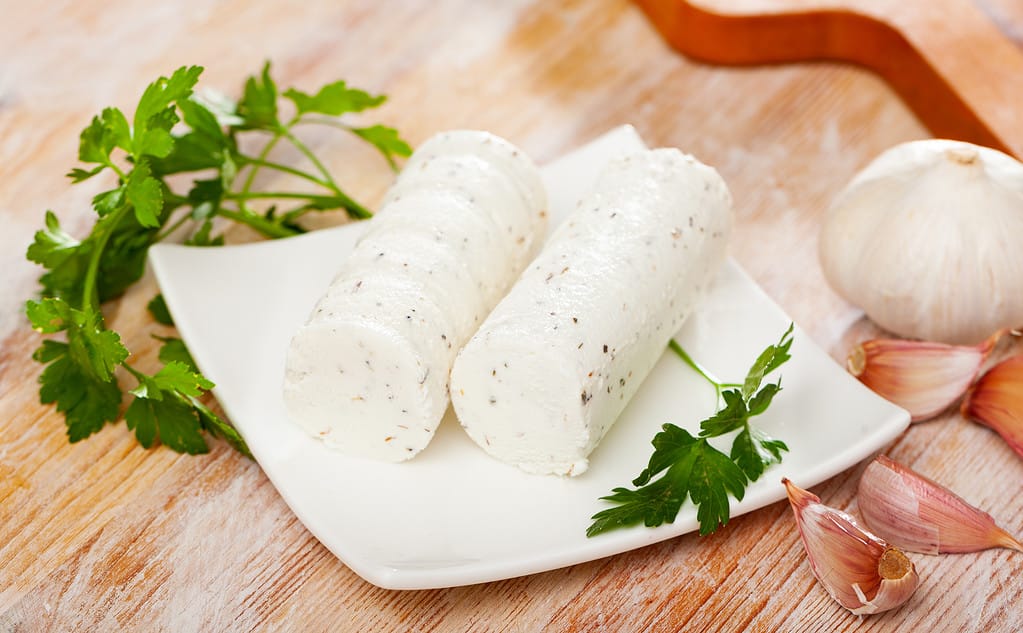
Some people say goat cheese has a “goaty” aroma.
©JackF/iStock via Getty Images
Cheesemakers make goat’s cheese, also known as chèvre, with (no surprise) goat’s milk! While goat cheese comes in many forms, the most popular form is soft and spreadable and usually in the shape of a log. This soft cheese is often coated in (or infused with) spices or herbs to create different flavors. What some call a “goaty” aroma offsets the cheese’s tangy flavor.
Goats were one of the first animals domesticated for milk production. Goat cheese dates back to at least 5,000 B.C., originating in the Middle East and Mediterranean. People in the Loire Valley in France embraced chevre as a delicacy in the eighth century. Today, that region produces some of the world’s most popular goat cheese.
6. Roquefort
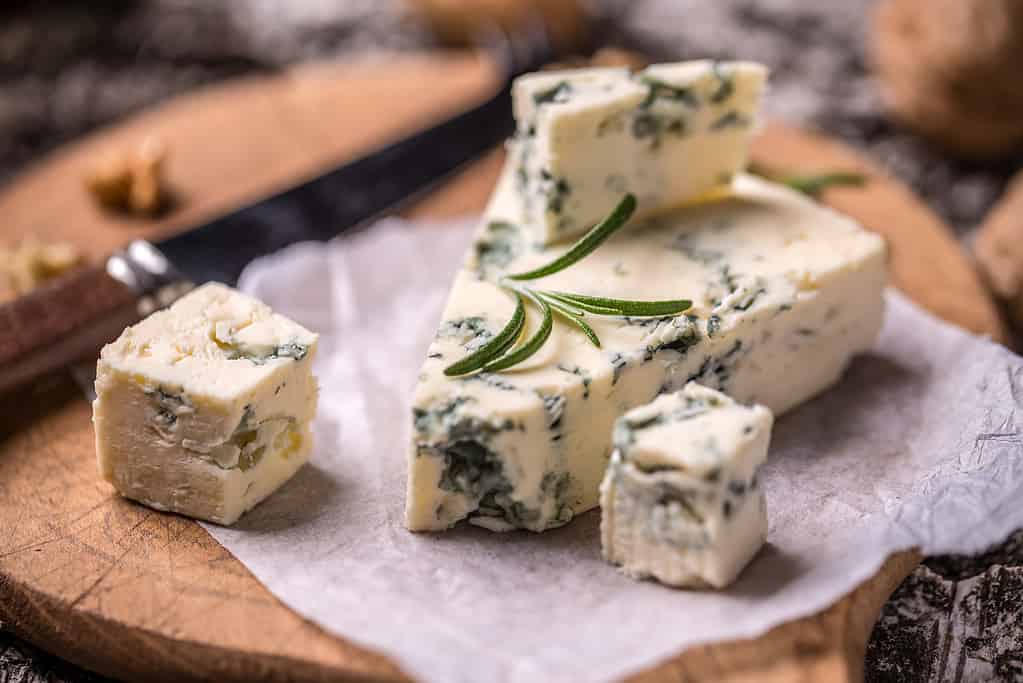
The distinctive taste and aroma of blue cheese are due to its infusion of mold.
©grafvision/iStock via Getty Images
Roquefort is a type of blue cheese produced from sheep’s milk in the caves of Roquefort-sur-Soulzon in France. While similar cheeses are produced elsewhere, only the cheese made in this location can be considered Roquefort, according to a protected European Union designation. Like other blue cheeses, Roquefort has veins of blue mold (made from Penicillium rocqueforti fungus) throughout its crumbly, moist texture. It is sharp, intense, tangy, and aromatic. It is often paired with fruits and nuts in salads, cured meats on cheese boards, or used as a sauce over seafood or meat dishes.
5. Halloumi

Halloumi is a popular cheese throughout the Eastern Mediterranean.
©PicturePartners/iStock via Getty Images
This cheese is traditionally made from sheep or goat’s milk (or a combination of the two). However, some cheesemakers use cow’s milk as well. Originating in Cyprus, this semihard cheese’s high melting point makes it ideal for frying or grilling. It is often served this way with vegetables but can also be used in sandwiches and salads. The two primary versions of halloumi have different flavors. Fresh halloumi is less salty and milder than mature (or aged) halloumi. The more mature version, which is aged in brine, has a drier texture and a saltier flavor.
4. Feta
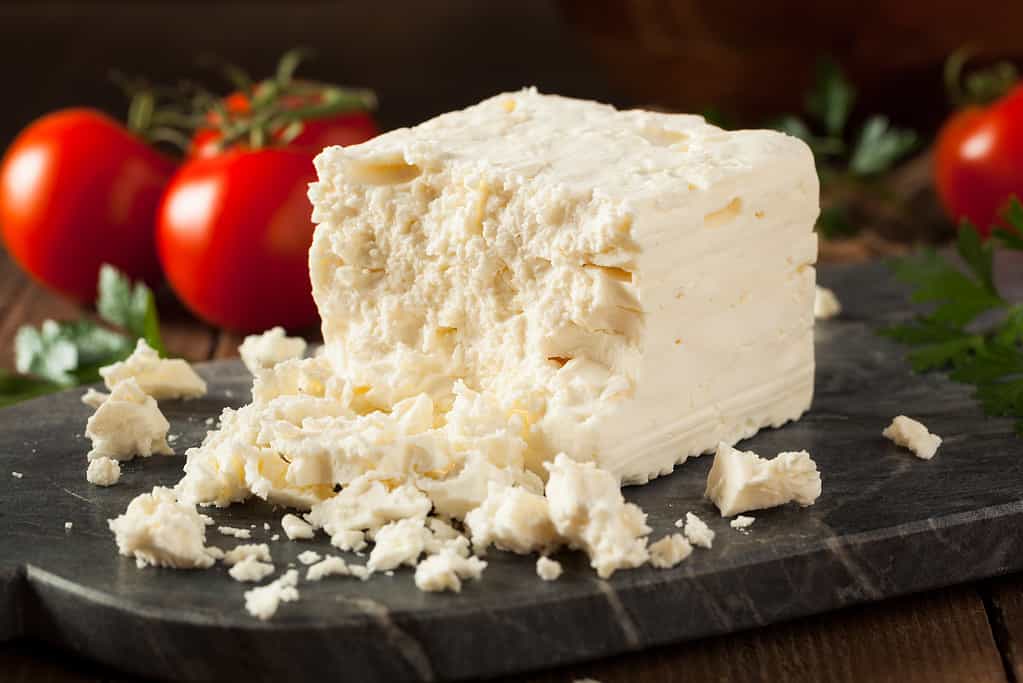
Feta cheese is produced in bricks that easily crumble.
©bhofack2/iStock via Getty Images
Cheesemakers use goat’s milk, sheep’s milk, or a combination of the two to make feta cheese. This crumbly cheese is lower in fat and calories than many other cheeses. Salads, omelets, and phyllo-based pies often use this Greek cheese. While the name “feta” has become synonymous with crumbly white brined cheeses, the EU’s protected designation extends only to cheese produced in Greece and the Lesbos Prefecture using traditional methods and specific milk ratios.
3. Manchego
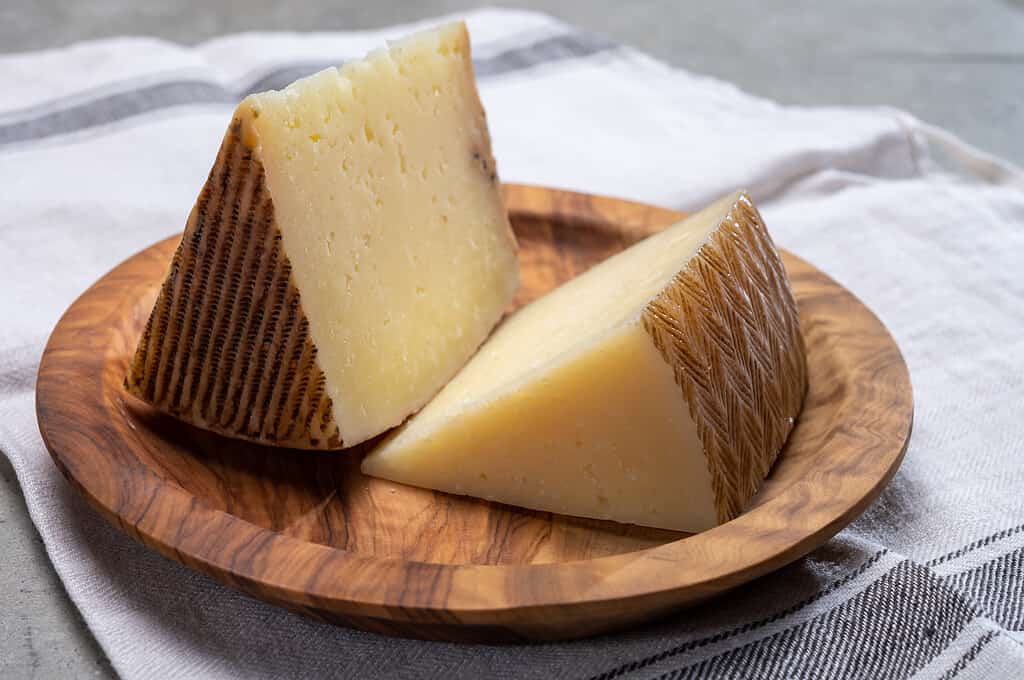
The distinctive Manchego rind is not edible.
©barmalini/iStock via Getty Images
Another popular sheep’s milk cheese, Manchego, has a distinctive traditional herringbone rind. Originating in Spain’s La Mancha region, Manchego is semi-soft and pale yellow in color. The cheese’s rich, sweet flavor is due in part to a high fat content of up to 57% percent, which gives this cheese a full-bodied taste. Manchego comes in different varieties based on age. It pairs well with ham, sun-dried tomatoes, and olives. As such, Spanish tapas often include Manchego.
2. Buffalo Milk Cheese
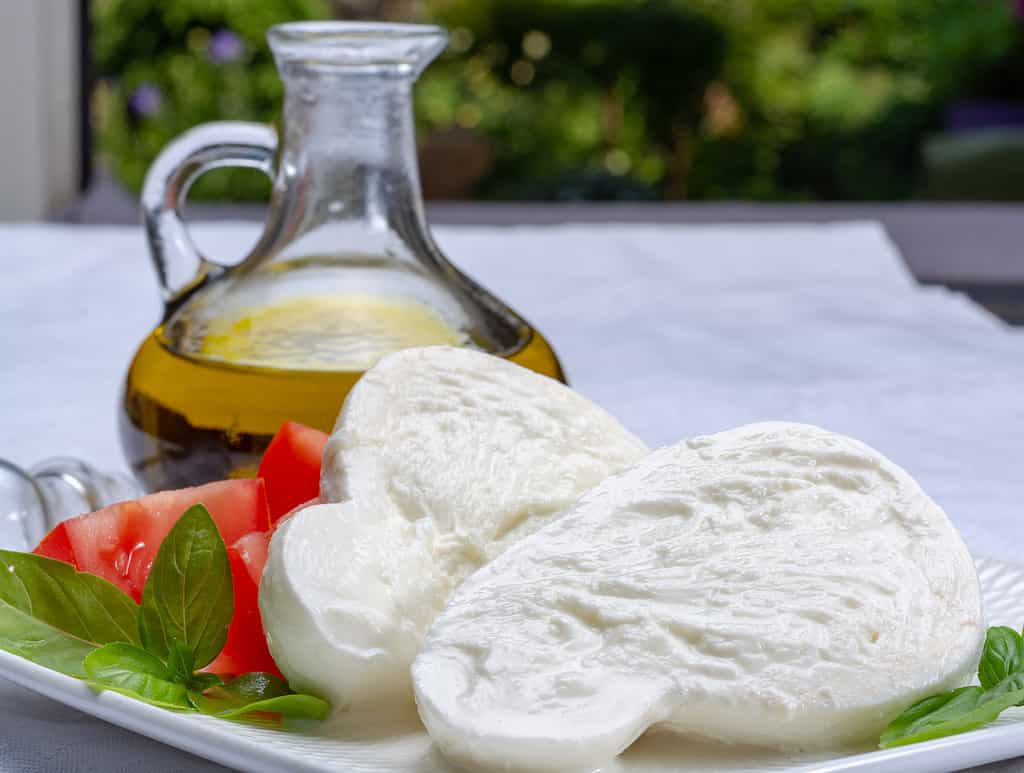
Buffalo mozzarella is a rich substitute for the traditional variety.
©barmalini/iStock via Getty Images
The milk for this smooth, creamy cheese doesn’t come from the usual suspects, like goats or sheep. Instead, cheesemakers use milk from the Italian Mediterranean buffalo, a type of water buffalo (Bubalus bubalis). Buffalo mozzarella has double the milk fat content of cow’s milk, which gives it a softer, creamier texture. It has a tangier taste than mozzarella made with cow’s milk. Pizza, pasta, and salads all use this mozzarella.
1. Vegan Cheese

Vegan cheese has grown in popularity recently and new varieties are constantly developed.
©Rimma_Bondarenko/iStock via Getty Images
For those looking to avoid any animal-based cheeses, a plethora of vegan options are available on the market. Vegan cheese contains vegetable proteins instead of milk. Cheesemakers add oils and thickeners to create a traditional cheese-like consistency. These cheeses also use macadamia nuts, almonds, cashews, or soy. While vegan cheesemakers have become better at replicating cheese consistency and flavor, vegan cheese does not melt as well as traditional cheese. Additionally, milk-based cheese is lower in sodium than vegan cheese.
Summary of Cheeses That Don’t Come from Cows
| Cheese Type | Composition |
|---|---|
| 1. Vegan cheese | Plant-based using vegetable proteins, often from nuts such as cashews, almonds, or macadamias |
| 2. Buffalo milk cheese | Water buffalo milk |
| 3. Manchego | Sheep’s milk |
| 4. Feta | Goat’s milk, sheep’s milk, or a combination |
| 5. Halloumi | Sheep’s milk (though some combine goat’s milk or cow’s milk) |
| 6. Roquefort | Sheep’s milk |
| 7. Goat cheese | Goat’s milk |
| 8. Peccorino | Sheeps’ milk |
The photo featured at the top of this post is © Natalia_Glynkina/iStock via Getty Images
Thank you for reading! Have some feedback for us? Contact the AZ Animals editorial team.







